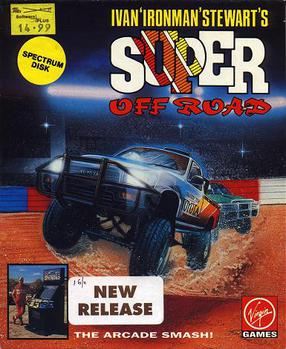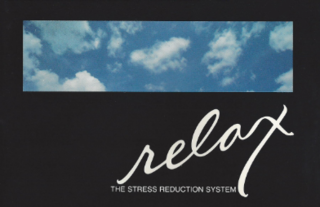Related Research Articles

The Atari XE Video Game System is an industrial redesign of the Atari 65XE home computer and the final model in the Atari 8-bit computer series. It was released by Atari Corporation in 1987 and marketed as a home video game console alongside the Nintendo Entertainment System, Sega's Master System, and Atari's own Atari 7800. The XEGS is compatible with existing Atari 8-bit computer hardware and software. Without keyboard, the system operates as a stand-alone game console. With the keyboard, it boots identically to the Atari XE computers. Atari packaged the XEGS as a basic set consisting of only the console and joystick, and as a deluxe set consisting of the console, keyboard, CX40 joystick, and XG-1 light gun.

Alley Cat is a video game created by Bill Williams and published by Synapse Software for Atari 8-bit computers in 1983. The player controls Freddy the Cat, who enters people's homes through open windows to perform various tasks in order to reach his love, Felicia. A port for the IBM PC as a self-booting disk and the IBM PCjr were published in 1984 by IBM. These use four-color CGA graphics.

Qix is a 1981 puzzle video game developed by husband and wife team Randy and Sandy Pfeiffer and published in arcades by Taito America. Qix is one of a handful of games made by Taito's American division. At the start of each level, the playing field is a large, empty rectangle, containing the Qix, an abstract stick-like entity that performs graceful but unpredictable motions within the confines of the rectangle. The objective is to draw lines that close off parts of the rectangle to fill in a set amount of the playfield.

Loopz is a puzzle video game designed and programmed by Ian Upton for the Atari ST in 1989. He previously worked as head game designer for Audiogenic, who acquired exclusive rights to the game, then in 1990 arranged for Mindscape to publish it for computers in North America and consoles worldwide.

Spelunker is a 1983 platform video game developed by Timothy G. Martin of MicroGraphic Image. It is set in a cave, with the player starting at the cave's entrance at the top, and the objective is to get to the treasure at the bottom.

Ivan "Ironman" Stewart's Super Off Road is an arcade video game released in 1989 by Leland Corporation. The game was designed and managed by John Morgan who was also lead programmer, and endorsed by professional off-road racer Ivan Stewart. Virgin Games produced several home versions in 1990. In 1991, a home console version for the Nintendo Entertainment System was later released by Leland's Tradewest subsidiary, followed by versions for most major home formats including the Master System, Genesis, Super NES, Amiga, and MS-DOS. A port for the Atari Jaguar was announced but never released. Some of the ports removed Ivan Stewart's name from the title due to licensing issues and are known simply as Super Off Road.

Krusty's Fun House is a puzzle video game based on the animated sitcom The Simpsons.

Tynesoft Computer Software was a software developer and publisher in the 1980s and early 1990s.

Robert J. Mical is an American computer programmer and hardware designer who has primarily worked in video games. He is best known for creating the user interface, Intuition, for Commodore's Amiga personal computer (1985), contributing to the design of the Amiga hardware, and co-designing, with Dave Needle, the Atari Lynx color handheld (1989) and the 3DO Interactive Multiplayer (1993).
Andrew Braybrook is a software engineer and former game programmer. He created video games such as Paradroid, Gribbly's Day Out, Fire and Ice, Uridium and Morpheus. He also programmed the Amiga and Atari ST conversion of the arcade game Rainbow Islands.

Antic was a print magazine devoted to Atari 8-bit computers and later the Atari ST. It was named after the ANTIC chip in the 8-bit line which, in concert with CTIA or GTIA, generates the display. The magazine was published by Antic Publishing from April 1982 until June/July 1990.Antic printed type-in programs, reviews, and tutorials, among other articles. Each issue contained one type-in game as "Game of the Month." In 1986, STart magazine was spun off to exclusively cover the Atari ST line.
Cathryn Mataga is a game programmer and founder of independent video game company Junglevision. Under the name William, she wrote Atari 8-bit family games for Synapse Software in the early to mid 1980s, including Shamus, a flip-screen shooter.
Synapse Software Corporation was an American software developer and publisher founded in 1981 by Ihor Wolosenko and Ken Grant. Synapse published application software and developer tools and was primarily known for video games. It initially focused on the Atari 8-bit computers, then later developed for the Commodore 64 and other systems. Synapse was purchased by Broderbund in late 1984 and the Synapse label retired in 1985.
John D. Harris is a computer programmer, hacker and author of several 1980s Atari computer games. His impact on the early years of the video game industry are chronicled in the book Hackers: Heroes of the Computer Revolution.

Encounter! is a first person shoot 'em up video game released in 1983 for Atari 8-bit computers and Commodore 64 programmed by Paul Woakes for Novagen Software. It was published by Novagen in the UK and Europe and by Synapse Software in North America. The gameplay is similar to that of Atari, Inc.'s 1980 arcade game Battlezone, but with large, sometimes screen-filling, scaled bitmaps instead of wireframe models.

Necromancer is an action game created by Bill Williams for Atari 8-bit computers and published by Synapse Software in 1982. A port to the Commodore 64 followed in 1983. The game was rereleased by Atari Corporation on cartridge in the style of the Atari XEGS in 1987.

Drelbs is a maze video game written by Kelly Jones for Atari 8-bit computers and published by Synapse Software in 1983. An Apple II port by Jonathan Tifft was released the same year. A Commodore 64 version followed in 1984 implemented by Miriam Nathan and William Mandel. The objective is to move the walls of the maze to make boxes. Some reviewers found the overall collection of elements to be eccentric and unique.

Knights of the Crystallion is a 1990 video game for the Amiga developed by Bill Williams and published by U.S. Gold. A fantasy-themed adventure game comprising a mix of sub-games with a puzzle element, the game makes extensive use of the Amiga computer's Hold-And-Modify graphics mode.

Relax is a suite of self-improvement software written by Kelly Jones and Bill Williams for Atari 8-bit computers and published by Synapse Software in 1984. Subtitled "The Stress Reduction System", Relax uses a headband containing sensors attached to electromyograph hardware to provide audio/visual feedback in three interactive programs. It also includes a 25-minute cassette tape of guided relaxation.
References
- ↑ Olafson, Peter (February 1998). "A Tribute to the Work of Bill Williams: Part 1". Amazing Computing: 44.
- 1 2 Reimer, Jeremy (13 May 2008). "A history of the Amiga, part 7: Game on!". Ars Technica.
- ↑ "Bloomsbury Publishing, Bill Williams Author Page".
- ↑ "Backwards Compatible: Bill Williams". Good Game . ABC TV. 1 November 2011. Retrieved 4 September 2012.
- ↑ Hague, James (1997). "John Harris interview". Halcyon Days: Interviews with Classic Computer and Video Game Programmers.
- ↑ "VIC-20 Cartridge Rarity & Gameplay list". Digital Press.
- ↑ Leyenberger, Arthur (May 1985). "Review: Relax Stress Reduction System". Compute! (60): 52.
- ↑ "Relax". Atari Mania.
- ↑ Olafson, Peter (March 1998). "A Tribute to the Work of Bill Williams: Part 2". Amazing Computing: 35–38.
- ↑ "Bill Williams Game Credits". MobyGames.
- 1 2 Hague, James (May 13, 1999). "Bill Williams Remembered". dadgum.com.
- ↑ Williams, Bill (2001). Naked Before God: The Return of a Broken Disciple. Morehouse. ISBN 9780819218780.
- ↑ Williams, Bill (March 1999). Manna in the Wilderness: A Harvest of Hope. Morehouse. ISBN 978-0819217820.
- ↑ "Bill Williams: The Story of a Life". The Digital Antiquarian.
- ↑ "Bill Williams". MobyGames.
- ↑ "Bio and Gameography for Game Designer Bill Williams". Game Designers Remembered.